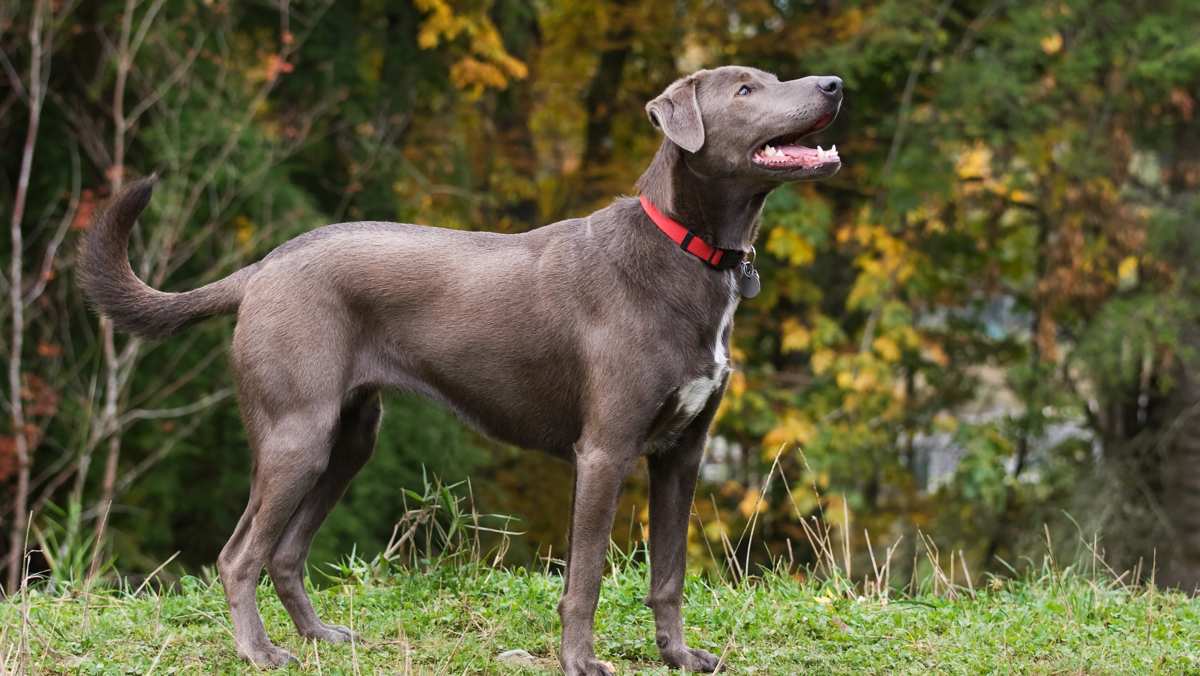Blue Lacy Breed Details
Below are details and specs for the Blue Lacy dog breed.

The Blue Lacy is also referred to as the "Lacy Dog" or simply "Lacy" and is a breed that appeared a few centuries ago in the Southwestern United States. This dog is known for being the state dog of Texas and possesses a true country spirit; they are diligent, alert, and always complete a task. Lacys are also great family companions because they are best friends to children, do well with other dogs and strangers, but can still be a protective watchdog. Members of this breed fare best when they have a job to do, therefore, their perfect matches are hunter, farmers, ranchers and other outdoorsy folks. Their attractive coats need very little grooming and they can adapt to indoor or outdoor living (provided they get enough attention). The Blue Lacy is a very hardy dog that has no well documented health issues and may well live 16-20 years; this should be taken into consideration carefully as it makes owning a Lacy a lifelong commitment.)
Below are details and specs for the Blue Lacy dog breed.
Individuals typically stand around 18-25 inches at the shoulder and weigh from 25 to 50 pounds.
The Lacy is driven, alert, intuitive and an all-around good family companion. They are playful and loyal with kids, mesh well with other dogs, and make good watchdogs. They may retain hunting instincts toward smaller pets.
This breed is very low maintenance in regards to grooming. As long as you can firmly establish yourself as the leader, they are natural workers and very trainable. They are at their best when they have a job to do so an active, outdoorsy owner is a must.
The Blue Lacy was documented to make its appearance in the Southwestern U.S. during the 1800s and was named for the Lacy family of Texas. This family maintains they are a mix of several breeds including Greyhounds, scenthounds (such as the July, Redbone, or Italian Greyhound), and even coyotes! They originally found their place herding and droving on the open plains, and as these needs diminished with time, found new jobs as game trackers including hogs and deer. They are not only prized for trailing wounded game and treeing others but are also dependable family companions. Presently, they are still used heavily by the United States Trappers and still can be found doing farm and ranch work; they are known for leading the livestock instead of pushing them from behind. The Blue Lacy is recognized by many organizations including the UKC, ACA, and CKC. In 2001 they were recognized by the Texas Senate and in 2005 they became the state dog.
Members of this breed are absolutely eye catching in addition to being medium sized, well balanced and symmetrical. Their coats are very short and smooth and are either blue, red or tri-colored. Lacys have proportionately sized heads that are rather flat on top. They have unique eye coloration, an orangish yellow, and a slate colored nose to match their coat. The triangular ears are set set on the top sides of the head and hang about 4-5 inches. Overall, their look is alert, confident, and capable of putting in work.
The images below represent the coat colors and patterns associated with Blue Lacies.



Lacys are very dependable and intuitive; you can count on them to be where they are supposed to be and doing what they are supposed to be. They are said to need very little training in the way of duties and are especially sensitive to raised voices and anger towards them. That being said, they are naturally dominant dogs and it is imperative that you firmly establish yourself as the pack leader at the time of puppyhood.
These dogs are energetic and driven to fulfill any task, they need plenty of stimulation and interaction. The best match for a Lacy is either farmer, hunter or a very active individual. They are protective and territorial and, like any other job assigned to them, they will do their utmost to guard you and their property. Lacys excel at: following blood trails, hunting hogs, treeing small animals, herding, and even search and rescue.
Ideally, this breed will have owners that are either very outdoorsy and active, farmers, ranchers, or hunters. They are at their best when they have a job to do and are getting plenty of exercise. They enjoy working and exercising with their owner/family and require a moderate amount of attention. Training them in their duties will require little effort--they are naturals! However, it is important to establish yourself firmly as the pack leader from the beginning with these dominant dogs.
The sleek, short coat needs little care and is said not to shed much. A brushing every week or so will help lessen whatever shedding there is. Nails should be trimmed regularly and the teeth and ears should be cleaned on a schedule as well.
Unlike many breeds, the Blue Lacy doesn't develop destructive behaviors quickly if bored, however, they still need appropriate amounts of exercise. Lacys are still working dogs and they get much exercise hunting, herding, or doing other duties on farms and ranches.
Lacys are very adaptable dogs that can live indoors or out. Whichever you decide, know that they will still need plenty of attention and exercise.
No well documented issues exist for this healthy breed and they will likely live a long life (around 16-20 years). Many Lacys are still active at the age of 16. Some experts mention that, although rare, skin allergies and Color Dilution Alopecia (loss of coloration and hair) has been noted.
Below are potential health concerns associated with Blue Lacies.